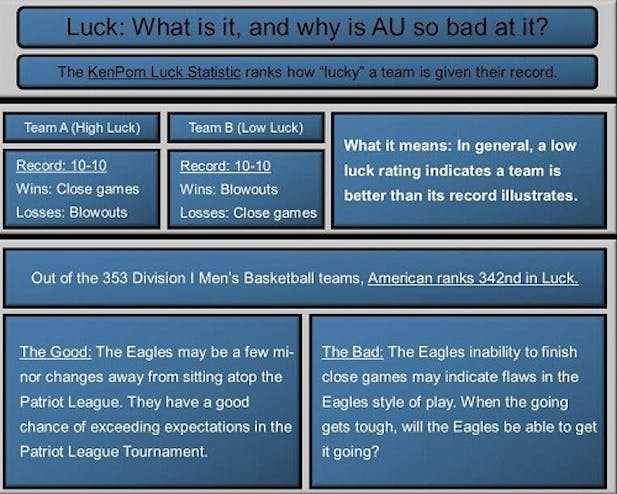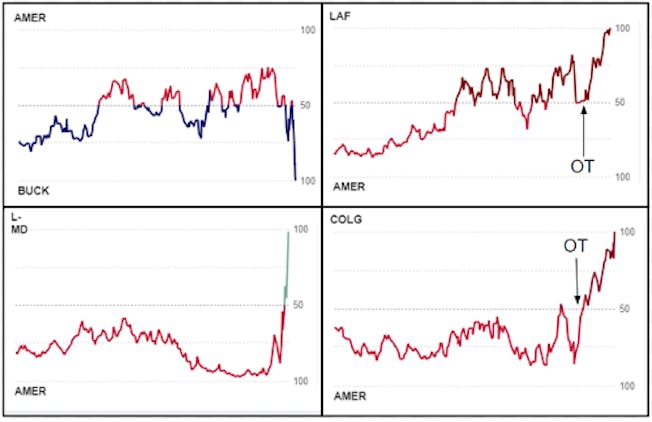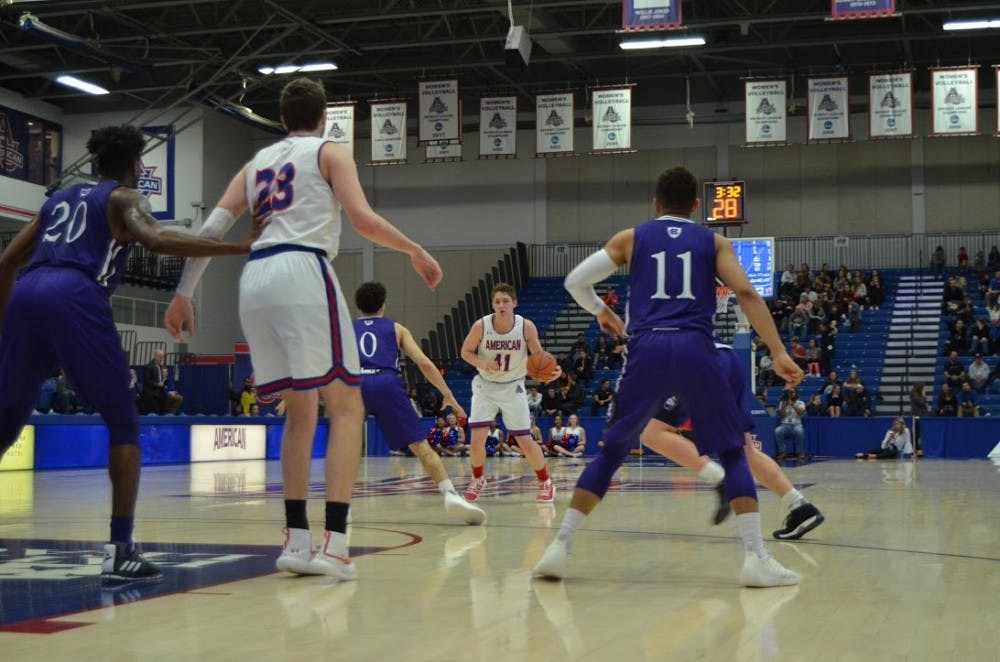If anything, the part that stung the most about AU men’s basketball’s 83-81 overtime loss on Saturday was that it felt…familiar.
“I thought for the most part, it’s kind of a duplicate of what happened the other night,” head coach Mike Brennan said after the game. “I thought we played well for the majority of the game, but you have to have a good last three minutes, and we didn’t have a good last three minutes.”
The Eagles’ loss on Saturday was a microcosm of a lot of their losses this season. How do I explain this in a way that makes sense?
The Eagles are like a Subway sandwich. They’re almost always going to start strong—but you don’t really know how good it was until about the two-hour mark. Sometimes it works out, but more often than you’d like, you’re doubled over in pain, left wondering where everything went wrong.

While Saturday’s loss moves the Eagles to 13-12, they don’t have the feel of a mediocre team. In wins, the Eagles have outscored their opponents by an average 10.5 points. In losses, their average margin of defeat is just 3.5 points. Of the Eagles’ 12 losses, nine were decided by two possessions or less. That’s a problem.
Below are the win probability charts of the Eagle’s past four close games. In general, the Eagles lead for the majority of the game and have a high win probability until the last few minutes of the game. In each case, the Eagles lost, whether it be in overtime (like against Lafayette and Colgate) or on a last-minute shot (like against Bucknell and Loyola).

The logical starting point is to ask how the team consistently gets itself in these positions.
The Eagles play at a slow pace, especially in their half-court offense. Their slow, deliberate style of play generates many of these low-scoring, close games. The team is in the 37th percentile of possessions per game and would place much lower if it weren't for Sa’eed Nelson's prowess in transition.
The second question is more important, nuanced and difficult to answer. Why do the Eagles keep losing these games?
In the fourth quarter, Nelson had a pair of costly turnovers in the final minute, after an eight-minute stretch without one. With 7:54 left in the game, the Eagles had yet to allow an offensive rebound. Down the stretch, they allowed five.
On the other side of the court, the Eagles had twelve offensive rebounds. Keeping suit, they all came before the 9:29 mark in the second half. After limiting Colgate forward Rapolas Ivanauskas to nine points in regulation, Ivanauskas scored ten of the Raiders’ final 12 points.
Against Loyola, the Eagles committed a number of late fouls that allowed the Greyhounds to make a late push. Whether that was the fault of overzealous reffing or mental errors on the part of American is up for debate. But at the end of the day, the result remains: the Eagles were unable to hold on.
In the loss to Loyola, the Eagles missed several crucial free throws that would’ve forced a second overtime. Against Bucknell, the Eagles made only one field goal in the final 4:47, and failed to create any transition opportunities.
The commonality, in each of these examples, is that the Eagles didn’t play their game. They let themselves be beaten. They didn’t operate within the flow of their offense. Teams force the Eagles to beat themselves, and when the game is close, they do.
For the Eagles to make a deep run in time for the Patriot League Tournament, they’ll have to go big or go home.





